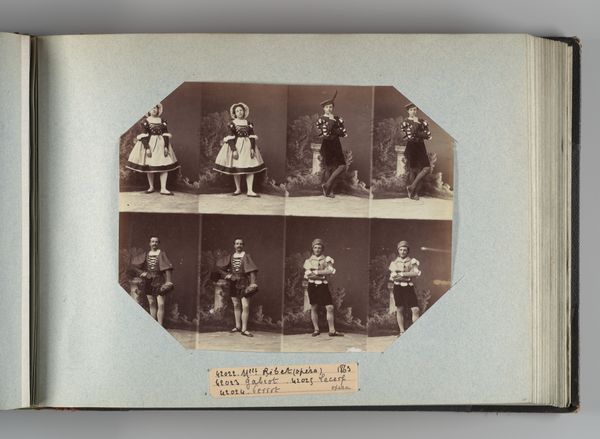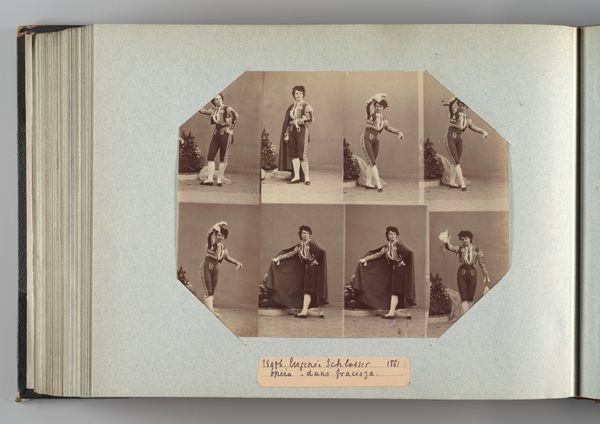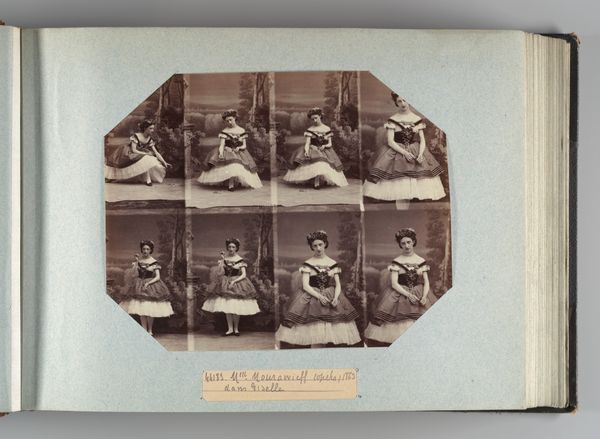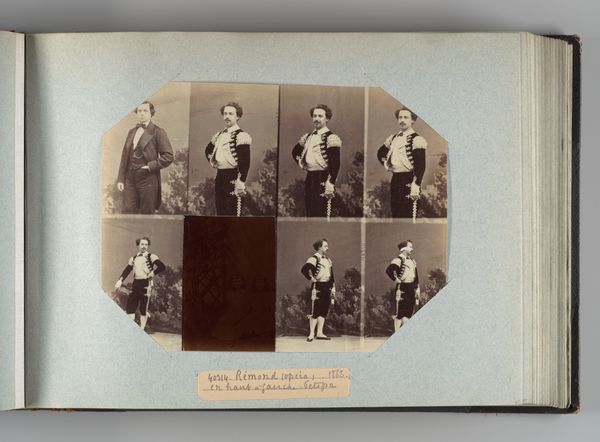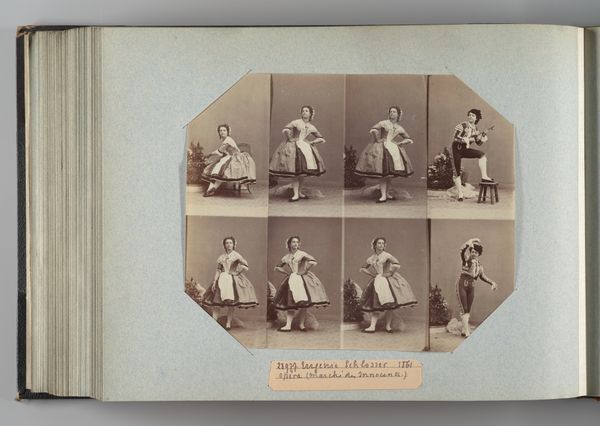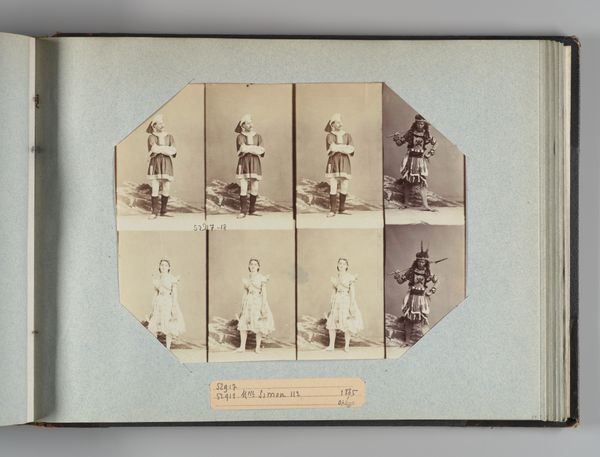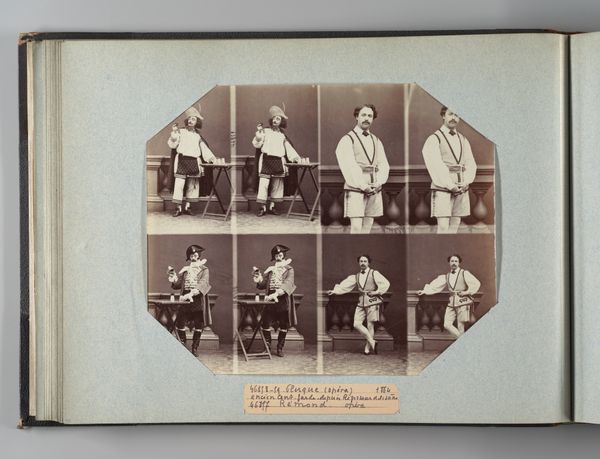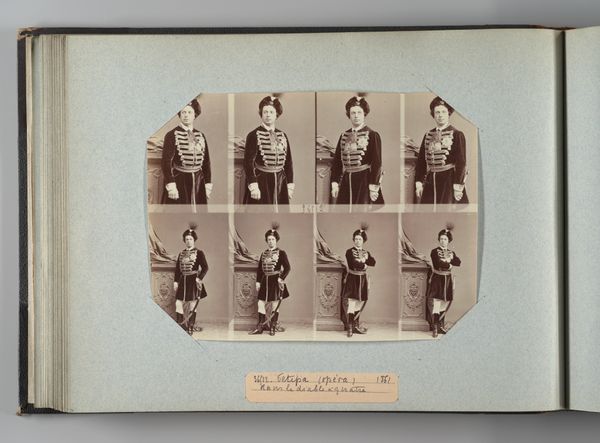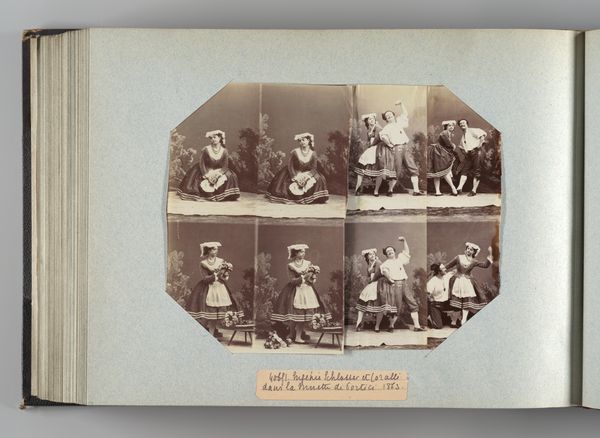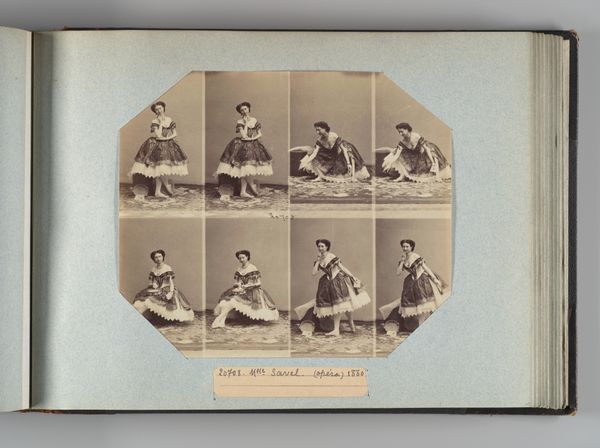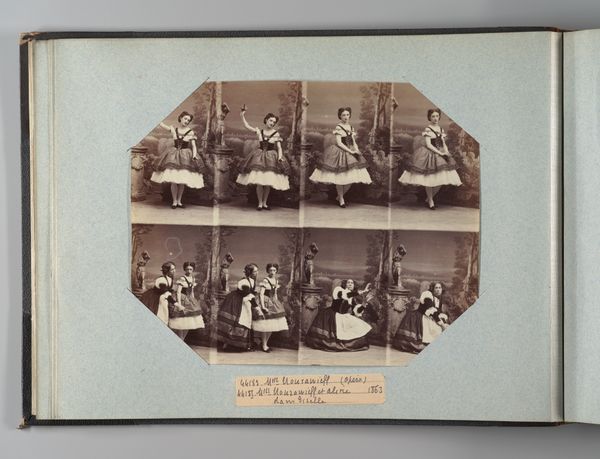
Dimensions: Image: 7 3/8 × 9 1/4 in. (18.8 × 23.5 cm) Album page: 10 3/8 × 13 3/4 in. (26.3 × 35 cm)
Copyright: Public Domain
Curator: The photograph we’re viewing, titled "Mlle Rousseau," was created by André-Adolphe-Eugène Disdéri around 1863. It’s an albumen print mounted on card, currently held at the Metropolitan Museum of Art. Editor: It strikes me as a curious, almost staged, set of portraits. The subject is presented in eight different poses, giving us a multi-faceted view, but it all feels rather controlled and formal. What do we know about the sitter, Mlle Rousseau, and the circumstances surrounding this portrait session? Curator: Unfortunately, details about Mlle Rousseau herself are scarce. Disdéri, however, was a very prominent photographer, known for popularizing the carte de visite format. These smaller, easily reproduced portraits became hugely popular, contributing to a boom in portrait photography’s availability and consumption. The material object and the process itself facilitated the rise of photographic portraiture. Editor: Exactly! Consider the social context: mid-19th century, the rise of the bourgeoisie, and their desire for representation and documentation. This is about making images affordable, widely available, and part of everyday life, moving photographic portraiture away from elite circles. And with the carte de visite album format, one could amass an entire social network in one's home! Curator: The poses certainly lend themselves to this democratization of image. I am quite interested in what this studio environment represents – the backdrop and posing reveal this incursion of Romantic ideas into photography. Genre paintings used familiar visual cues; photography now can easily borrow from this tradition. Editor: True. This connects to the power of imagery and representation within social structures. To view oneself through the lens of contemporary ideals, and to distribute it through the commercial networks—a remarkable development for self-perception! Even the details matter, from dress style to her carefully chosen poses. What do those contribute to how society perceived identity? Curator: In the process, photography changed both our expectations for capturing and creating memories, offering a lasting archive of material conditions for later studies. Editor: Indeed. Disdéri's entrepreneurial approach really capitalized on those societal needs. Mlle Rousseau’s photo becomes much more significant in understanding not only the fashions and mores but in seeing this transition. Curator: Agreed. Analyzing photographs such as these enriches our understanding of photography’s role in societal evolution, especially its connection to representation and production techniques. Editor: Ultimately, that's how it shapes culture. So much is caught in one small image.
Comments
No comments
Be the first to comment and join the conversation on the ultimate creative platform.
